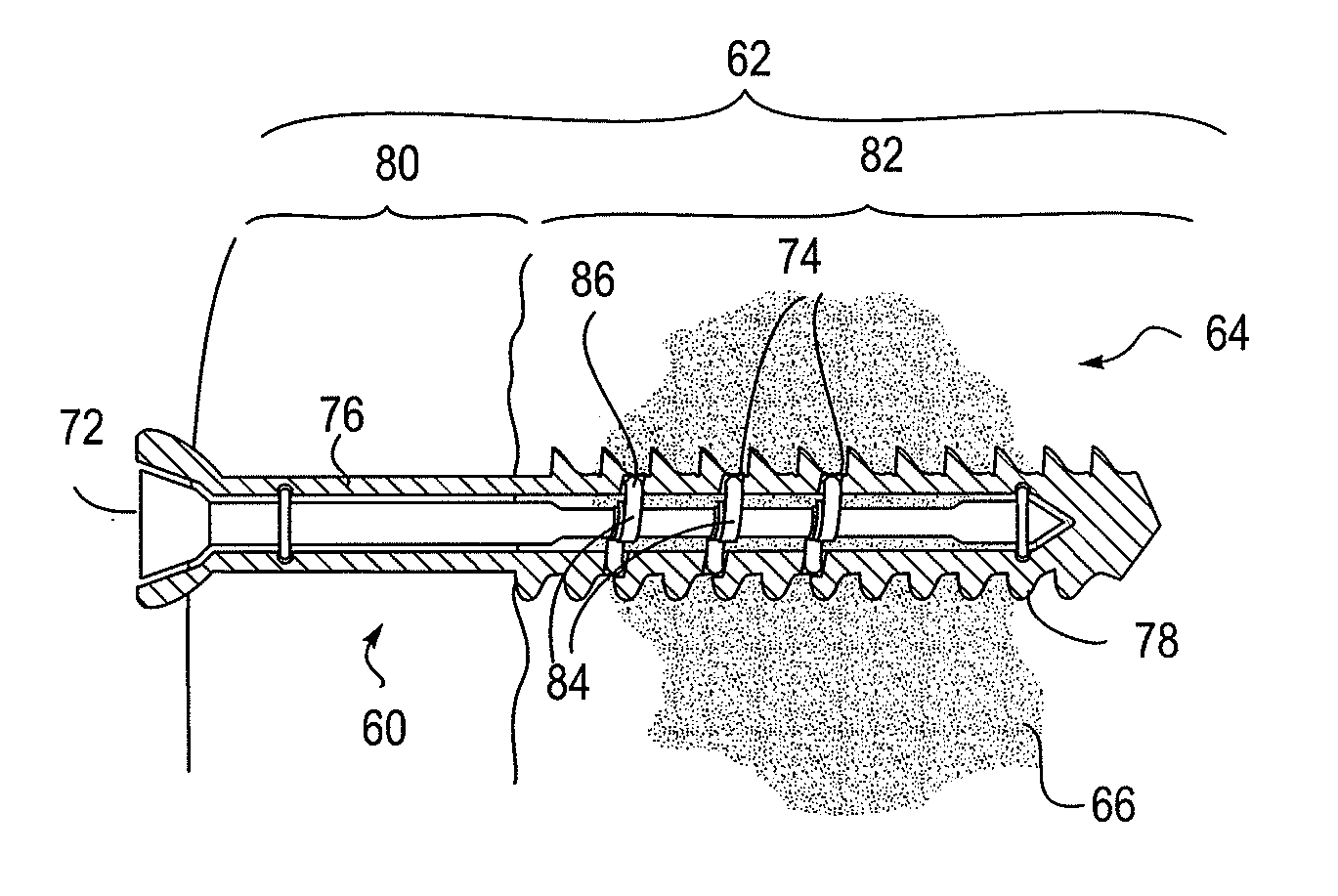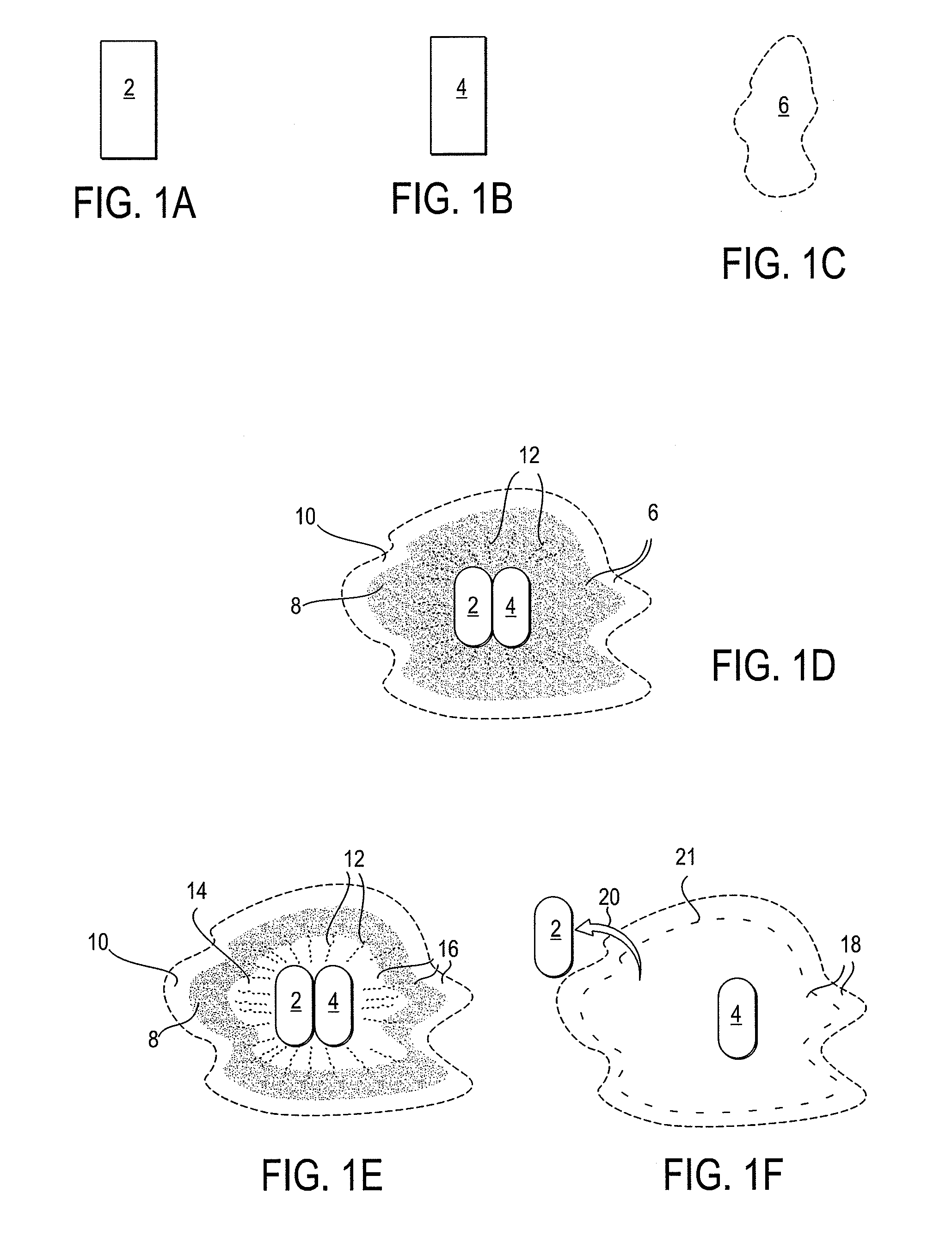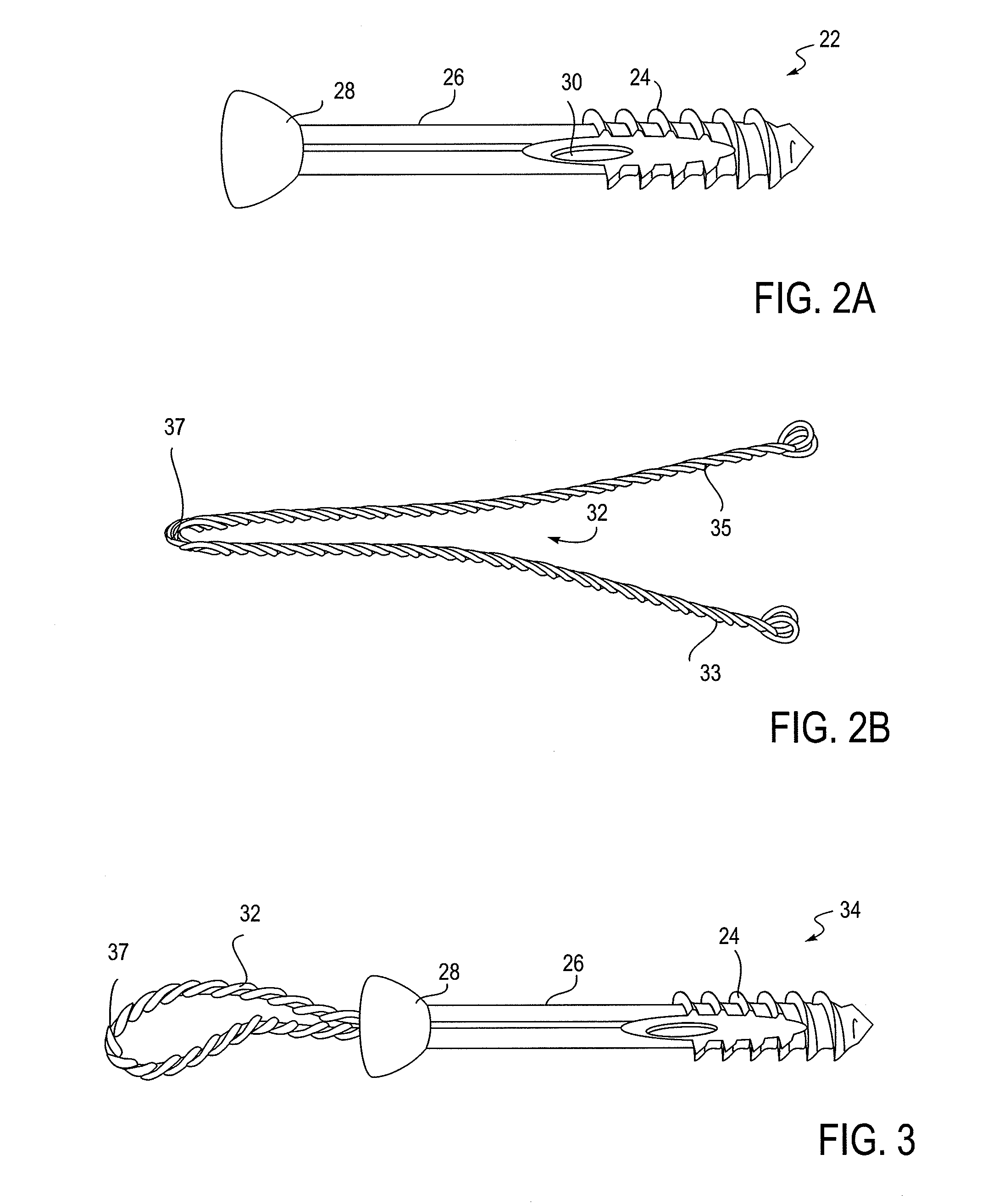Bone implant and systems that controllably releases silver
a silver-releasing, bone implant technology, applied in the field of bone implants and systems, can solve the problems of reducing the effectiveness of existing antibiotics, difficult and painful culture samples, and buried infections in bone, so as to improve the stability of the device, encourage tissue growth, and encourage the effect of ingrowth
- Summary
- Abstract
- Description
- Claims
- Application Information
AI Technical Summary
Benefits of technology
Problems solved by technology
Method used
Image
Examples
examples
[0117]Any of the exemplary ion-releasing devices described above may be used to treat (or prophylactically treat or prevent) infection and / or support tissue. Exemplary methods of use are illustrated below. These examples are intended only to illustrate how one such implant may be operated, and is not intended to be limiting or limited to any specific variation.
[0118]In general, the implants for controllably providing antimicrobial treatment and support may be used to treat any tissues of the body, but particularly bones, including the long bones (such as the femur, tibia, radius, ulna, fibula, metacarpal, metatarsal, phalanges, etc.), the spine, and the skull. In some variations the device is configured for insertion into the medullary canal of a lower extremity bone, such as a femur, tibia, tarsal or metatarsal, for the alignment, stabilization, fixation and bone biopsy of various types of fractures or deformities caused by trauma, infection or disease. Examples of such fractures i...
PUM
 Login to View More
Login to View More Abstract
Description
Claims
Application Information
 Login to View More
Login to View More - R&D
- Intellectual Property
- Life Sciences
- Materials
- Tech Scout
- Unparalleled Data Quality
- Higher Quality Content
- 60% Fewer Hallucinations
Browse by: Latest US Patents, China's latest patents, Technical Efficacy Thesaurus, Application Domain, Technology Topic, Popular Technical Reports.
© 2025 PatSnap. All rights reserved.Legal|Privacy policy|Modern Slavery Act Transparency Statement|Sitemap|About US| Contact US: help@patsnap.com



